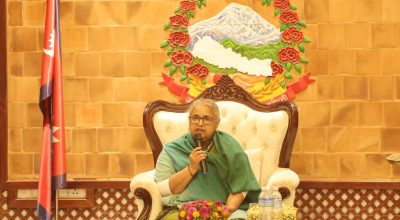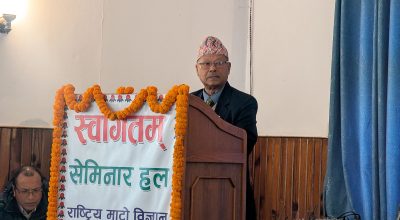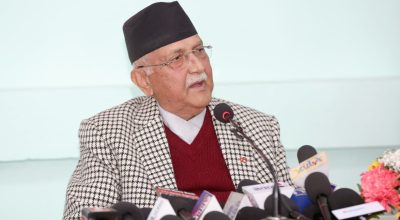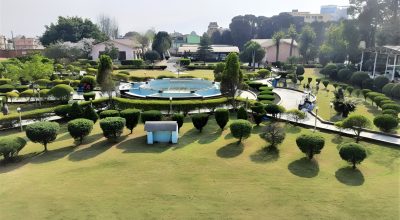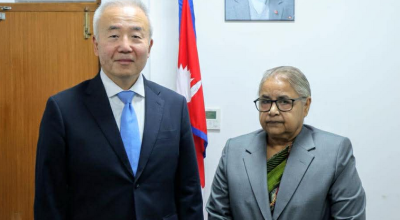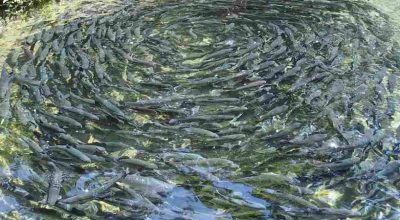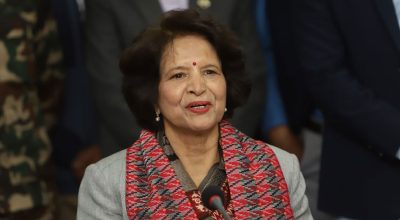
Kathmandu, Feb 15: The supervision consultant of the Upper Arun Hydropower Project, which is the biggest project of the country so far, has been selected.
An agreement has been signed regarding the supervision and consultation of the project which has a capacity of 1,063 megawatts. It will be built in Bhotkhola Rural Municipality of Sankhuwasabha.
Tractebel Engineering Germany, Tractebel Engineering Spain and WAPCOS Limited, India, a joint venture of India in association with Total Management Services (TMS), Nepal, and Jade Consult Pvt Ltd, Nepal, have been chosen to supervise the construction of the project.
A contract agreement has been signed between the promoter of the project, Upper Arun Hydro-Electric Limited and the consultant. The contract agreement (including tax and provisional sum) has been signed for construction supervision consulting services for 23.4 million euros, 445,000 US dollars and NRs. 643 million. It is arranged that the amount of consulting services will be paid in Euro, Dollar and Nepali Rupees.
The consultancy service period will be 117 months. According to the contract agreement, the consultant will prepare the design review and bidding documents under the first phase. 21 months have been allocated for this work. In the second phase, the construction of the project will be supervised. 72 months have been set for second phase.
In the third phase, consulting services will be provided for project operation and maintenance. To this, 24 months have been allocated. In the program held for the contract agreement, Kulman Ghising, Executive Director of Nepal Electricity Authority and Chairman of the Board of Directors of Upper Arun Hydro-Electric Limited, said that an important step has been passed as a consultant has been appointed to supervise the construction.
Ghising also mentioned that it is very important to prepare the tender documents to select the contractor for the construction of the main structure of the project within nine months.
“Nepal government, state government, local levels of project-affected districts, project-affected district residents, equity investment, concessional loans from international multilateral development partners, and domestic banks and financial institutions have been financing the project. It will be constructed as a model project of ‘blended financing’ (mixed investment),” said Executive Director Ghising.
Under the leadership of the World Bank, the process is moving forward to manage the finances from the international financial institutions within the next June/July. Pre-construction work is being done at the project site.
According to the managing director of the company, Phaanindra Raj Joshi, the international financial institutions led by the World Bank are preparing to sign an investment framework agreement. The international community will finance nearly 1 billion dollor.
At the price of 2019, the estimated cost of project will be nearly 1.75 billion US Dollor. The project will be constructed with 70 percent debt and 30 percent equity.
For this, under the leadership of Hydroelectricity Investment and Development Company (HIDCL), a memorandum of understanding (MOU) has been signed to raise investment nearly Rs. 53 billion from indigenous banks and financial institutions.
Pre-construction works are underway with the goal of starting construction from the beginning of 2026. The construction of the project is targeted to be completed by 2031.
The construction of about 21 kilometers of access roads including two kilometers of tunnels has already started. Offices and residences are being constructed at the project site.
The acquisition of 232.14 hectares of private land required for the project has been completed. About 98 percent of the affected people have received compensation. The rehabilitation of those displaced by the project is ongoing. About 22 households will be displaced by the project.
The project has been designed to run at full capacity for six hours a day during the six months of winter when electricity demand is high. The project will generate 4.53 billion units of energy annually. About 30 percent of this energy will be produced in winter. The produced electricity will be transmitted to the national grid system through the proposed substation at Haitar in Sankhuwasabha through a transmission line of about six kilometers of 400 kV. #Nepal





